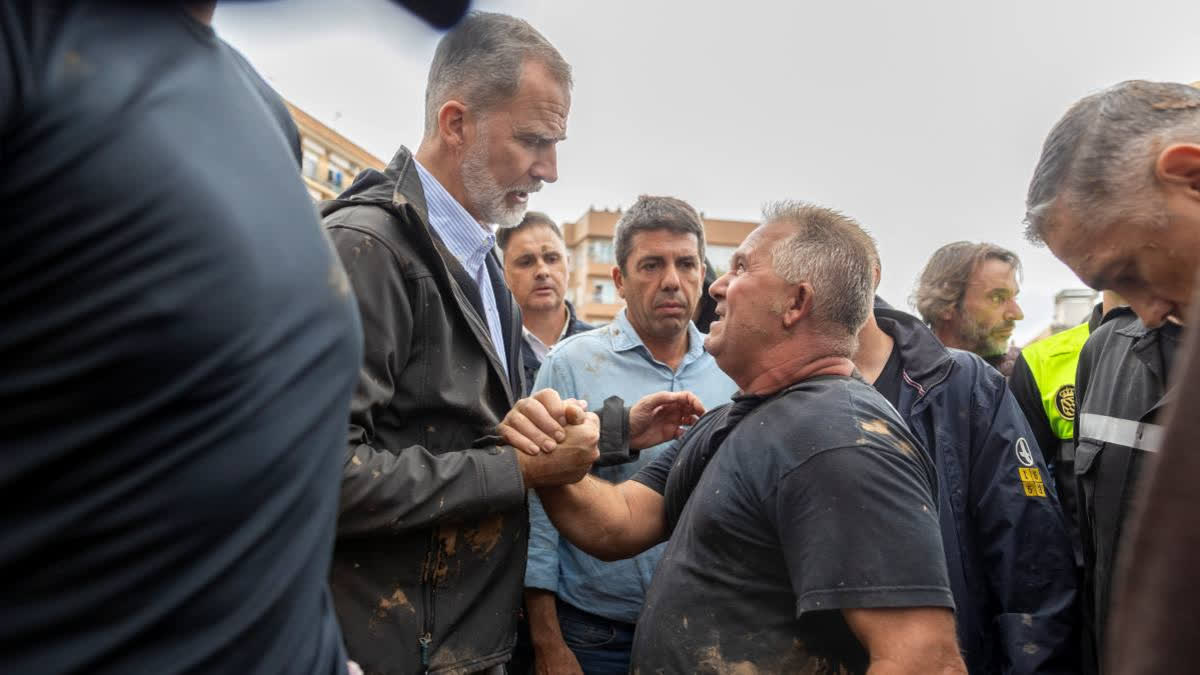Barcelona: Mud splattered the cheek of Spain's monarch as survivors of catastrophic floods unleashed their fury in a barrage of muck and mire. Felipe VI took it, literally, on the chin, and his determination to stay and speak to the enraged crowd could redefine his reign.
It instantly became an iconic moment. But what it will mean remains to be seen.
Spain's royals, prime minister and the Valencian regional president were greeted by a crowd hurling mud and other debris on Sunday when they tried to visit Paiporta, where over 60 people perished in last week's floods. The deluge has killed over 200 people in Spain and shattered communities.
It was the officials' first visit to the devastated area.
Sticky brown globs hit Felipe on the face and all over his black jacket, while Queen Letizia's hands were streaked with the mud that, nearly a week after the floods, still coats street after street of the southern outskirts of Valencia city. Many in the crowd wielded the shovels they are using to dig out their homes.
The anger appeared directed not at the king specifically but at the entire state for its management of the worst natural disaster in Spain's living memory. The government is also saying there were far-right agitators among the locals, implying they wanted to go after the Socialist prime minister.
In any case, for Montserrat Nebrera, professor of constitutional law at the International University of Catalonia, the shocking sight of a muddied monarch could set a precedent for more fervent protests, since "never had such anger been shown to the king."
Monarchists like Nebrera and even republicans agreed that Felipe, who holds a largely ceremonial position, cut the figure of a man of state. The king insisted that his bodyguards, who tried to cover him with umbrellas, let him get close to talk with residents, some of whom screamed "Get out!" and "Killers!" Letizia has likewise been praised for staying put and speaking with distraught people.
A monarch seen as aloof extends himself
"It could go down as the greatest day of Felipe's reign," Oriol Bartomeus, a political science professor at the Autonomous University of Barcelona, told The Associated Press.
"If he had sought protection from his bodyguards and run away, now that would have been the darkest day of his reign. Instead he showed why he is king, demonstrating composure and serenity, and by getting as close as he could to the people."
There is no doubt it was the most memorable moment of his reign.
The 56-year-old Felipe took over a Royal House whose reputation was in tatters after the financial and lifestyle scandals of his father, Juan Carlos, who abdicated in 2014. Earlier in his reign, Juan Carlos was loved or at least grudgingly respected after helping Spain's restoration of democracy after the death of dictator Francisco Franco. He was seen as down to earth and fun-loving compared to other European royals.
His son, by contrast, has been perceived as aloof, and has relied on Letizia, a former journalist, to help him run a relatively frugal palace in a nation where republican sentiment is strong.
